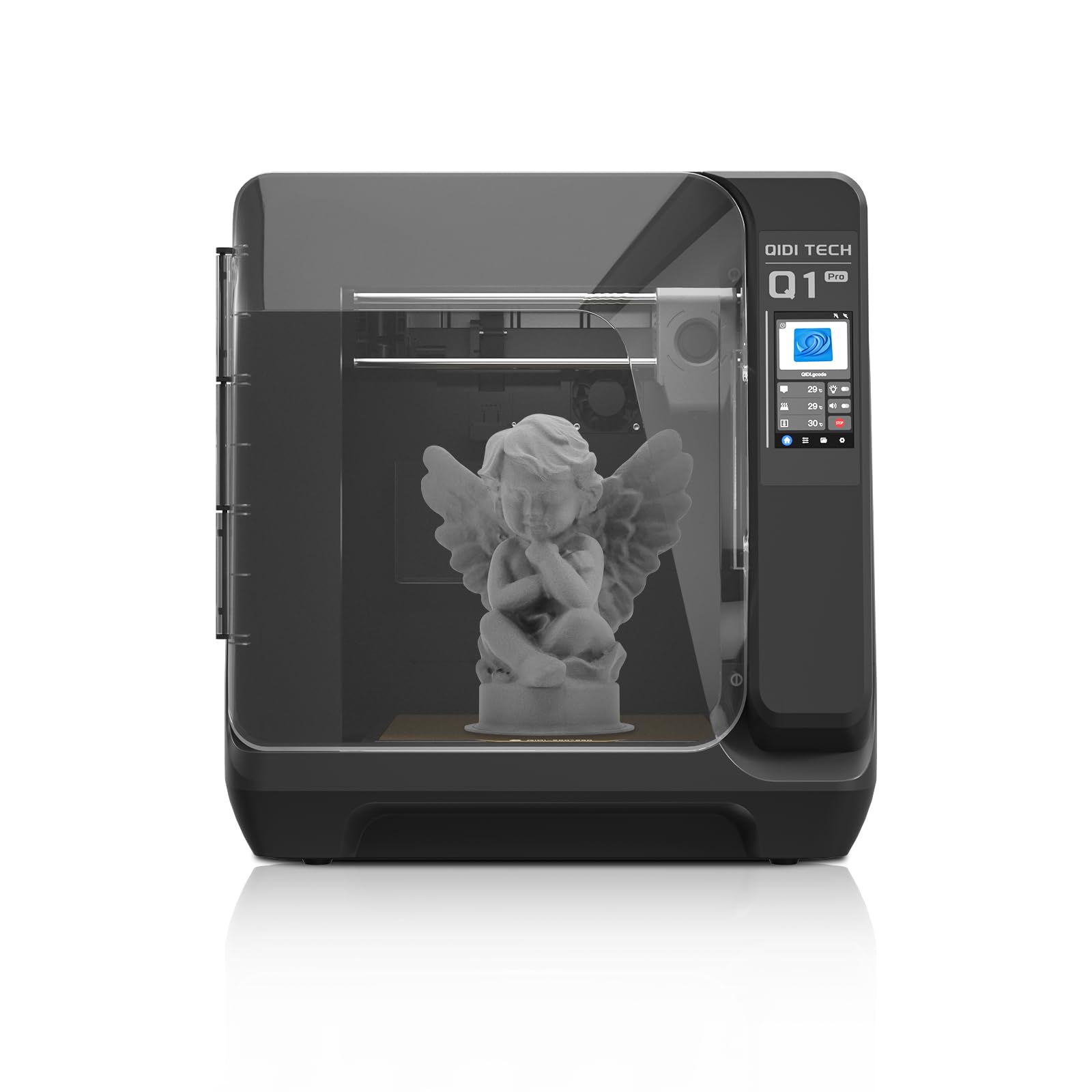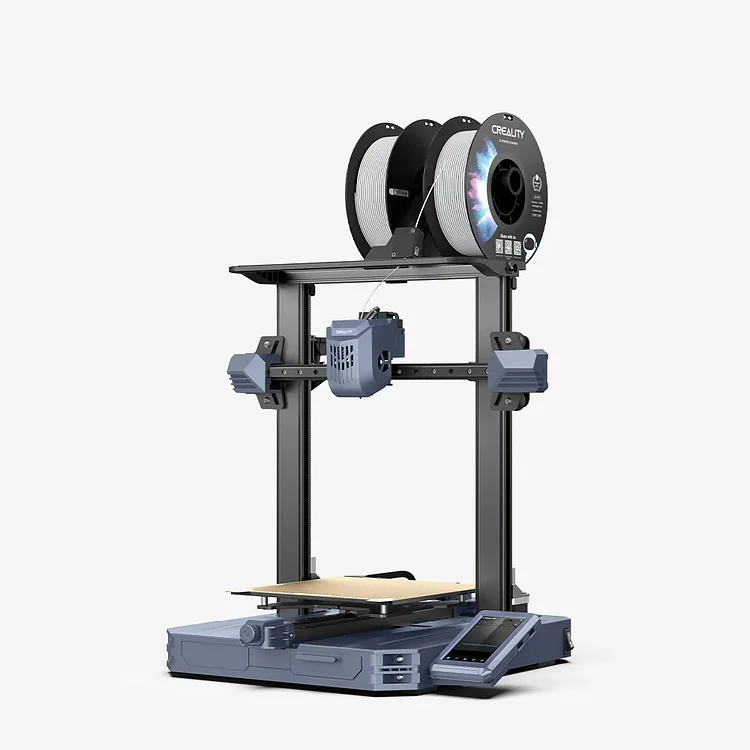Compare Q1 PRO vs CR10 SE
Comparison between the best 3D printers
Choose the best 3D printer at the best price. The cheapest 3D printers are here.
Buy a 3D printer here with 3D Fila.
 |
 |
|
| Model | Q1 PRO[BUY Q1 PRO] |
CR10 SE |
| Printing Material | Filament | Filament |
| Buy Filament for QIDI Q1 PRO | Buy Filament forCreality CR10 SE | |
| Estimated price | $449,00 | $386,00 |
| Manufacturer | QIDI | Creality |
| Release Year | 2024 | 2023 |
| Print Volume [mm] | 245x245x245 | 220x220x265 |
| Printer Size [mm] | 467x477x489 | 490x470x625 |
| Weight [kg] | 20 | 6,9 |
| Power Loss Recovery | YES | NO |
| Enclosed printer | YES | NO |
| Bed Leveling | Automatic | |
| Filament End Sensor | YES | NO |
| Bed type | Heated | |
| Power supply system | Direct Drive | Direct Drive |
| Standard nozzle | 0,4 | 0,4 |
| Maximum Nozzle Temperature [°C] | 350 | 300 |
| Maximum Bed Temperature [°C] | 120 | 110 |
| Maximum printing speed [mm/s] | 600 | 600 |
| Filament holder | YES | YES |
| Camera for supervision | YES | YES |
| Recommended filaments | PLA、ABS、ASA、PETG、TPU、PC、PA、PA-CF、PET-CF、PAHT-CF etc. | PLA, PETG, PET, TPU, PA Wood, ABS, ASA, PA, PLA-CF |
| Recommended slicers | QIDI Slicer/Cura/Simplify 3D/ORCA/PRUSA Slicer | Creality Print, Cura, Simplify3D, PrusaSlicer, Orca Slice |
| Maximum Resolution [mm] | 0,1 | 0,1 |
| Processor | Cortex-A53,64-bit Processor | |
| Display | Touchscreen 4,3'' | |
| Power Supply | 350 W | |
| Connectivity | WiFi/USB Flash Drive/Ethernet Cable | USB, Wifi |
| Operating systems | Windows, Linux, Macbook | Windows, Linux, Macbook |
| Date of registration in the system | 2024-07-09 | 2024-07-02 |
| Release date | 2024 | 2023 |
| Extra features | The QIDI Q1 Pro 3D printer stands out for its Core XY structure and heating chambers that reach up to 60ºC, ideal for advanced materials such as ABS and Nylon. It features Klipper firmware, an automatic leveling system, a high-flow extruder with a double metal nozzle and a hotend that reaches 350ºC. It offers connectivity via Wi-Fi, USB and Ethernet, as well as a 1080p camera for remote monitoring and an intuitive touchscreen for easy operation. | The Creality CR10 SE stands out for its printing speed of up to 600 mm/s, easy and intuitive assembly, direct extruder with double gears, hotend with hardened steel nozzle and ceramic heater, automatic leveling with CR-Touch and pressure sensor, and use of Creality OS firmware based on Klipper, with automatic input shaping calibration. It also includes Wi-Fi connectivity, a filament out-of-stock sensor and a robust structure with linear rails on the X and Y axes. |
| Support for multiple colors and materials (AMS and CFS) | NO | NO |
Notes * |
||
| Cost-benefit | 8 / 10 | 7 / 10 |
| Hardware | 4.8 / 10 | 2.1 / 10 |
| Tela | . | . |
| Print volume | 3 / 10 | 3 / 10 |
| Performance | 5 / 10 | 5 / 10 |
| [BUY Q1 PRO] |
Conclusion |
| In conclusion, both the QIDI Q1 PRO and the Creality CR10 SE present compelling options for 3D printing enthusiasts, each offering unique features that cater to different priorities. The Q1 PRO, priced slightly higher, boasts an enclosed design ideal for advanced materials, alongside superior specifications like a higher maximum nozzle and bed temperatures, automatic bed leveling, and power loss recovery features. Its emphasis on user-friendly operation through a touchscreen interface and remote monitoring via camera enhances its appeal for those seeking convenience and versatility. Conversely, the CR10 SE, being more affordable, showcases impressive performance with its high printing speeds and user-friendly setup. It provides essential features such as automatic leveling and a direct drive system, making it suitable for beginners and those looking for a reliable workhorse. However, it lacks some advanced functionalities found in the Q1 PRO, such as an enclosed chamber and power recovery capabilities. Ultimately, the decision between the two will largely depend on budget constraints and specific printing needs. For users focused on printing with a variety of advanced materials and requiring robust features, the Q1 PRO may be the preferred choice. In contrast, those prioritizing cost-effectiveness, along with solid performance in everyday printing, might lean towards the CR10 SE. Both printers deliver commendable performance, ensuring that either selection will serve well in various 3D printing applications. |

